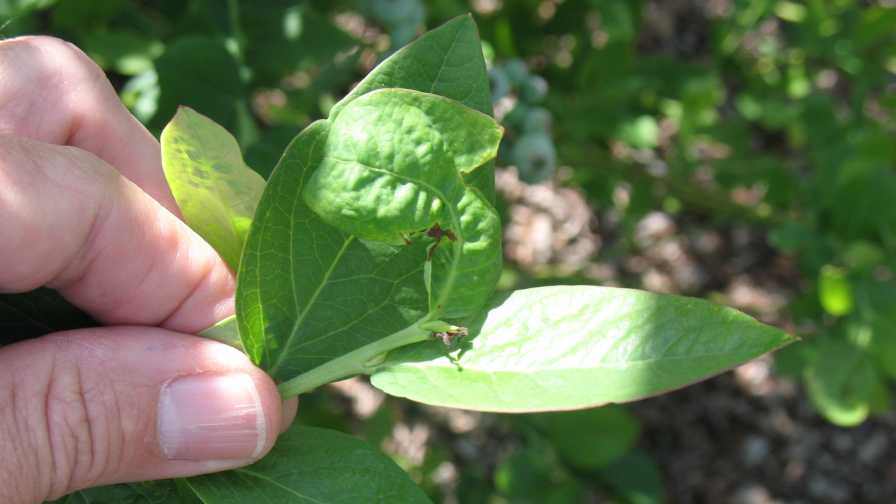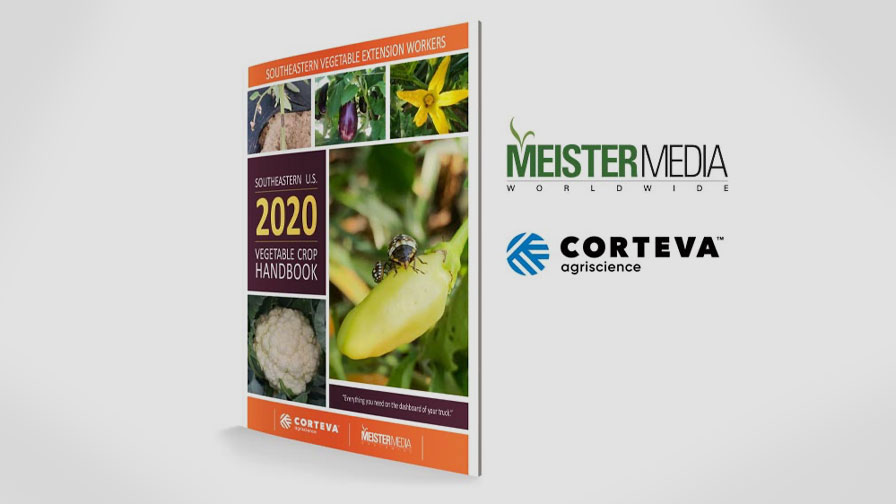What Gall?! Florida Growers on Alert for Blueberry Pest

Deformed leaves are one sign of damage and the presence of blueberry gall midge in the field.
Photo courtesy of UF/IFAS
Where are all the blueberry gall midges? Florida growers and researchers are keeping a close eye out for the pest, which has been lying low so far this season.
UF/IFAS scientists are conducting a limited amount of monitoring for adult gall midge this season on a few farms throughout the state, according to a recent notification sent out by the Florida Blueberry Growers Association (FBGA).
“The absence of gall midge observed in a region does not mean there is no gall midge activity on your farm,” caution UF/IFAS researchers Doug Phillips and Oscar Liburd in the FBGA communication.
For the two weeks ending January 17, researchers logged the following blueberry gall midge identification data:
* North-Central Florida – 49 adults over 2 farms
* Central Florida – 0 adults over 3 farms
* South-Central Florida – 0 adults over 2 farms
The monitoring results will continue to be updated due to a higher number of traps this season in North-Central Florida.
Liburd recently reported the identification of a second gall midge species that can damage blueberries in Florida, Prodiplosis vaccinia (in addition to the previously known Dasineura oxycoccana). Dasineura adults are typically active beginning in November, with a peak in January and February in Central and South-Central Florida, and a peak in February and March in North-Central Florida.
Emergence is typically triggered by cool days followed by warm days, Liburd goes on to report. Prodiplosis is typically present from April through July. Monitoring can be done using either a bucket trap placed on the ground below the plant canopy (3 to 5 per acre) or a clear sticky panel trap hung in the lower part of the plant canopy (1 to 3 per acre).
Spraying with recommended insecticides should begin when two or more adults are found in a trap. If monitoring is not done, preventative insecticide sprays should begin just prior to floral bud break. Since the Prodiplosis species is active later in the blueberry season, preventative insecticide applications of recommended products should continue for up to two weeks before harvest.
Click here for more blueberry gall midge monitoring and managing tips.









